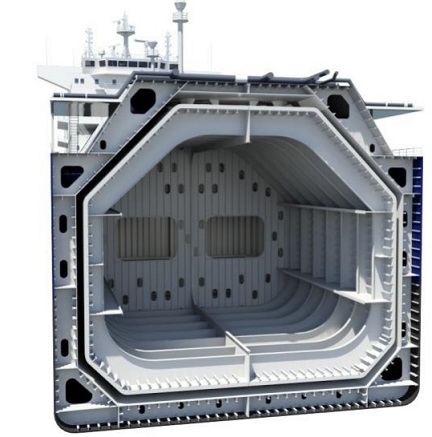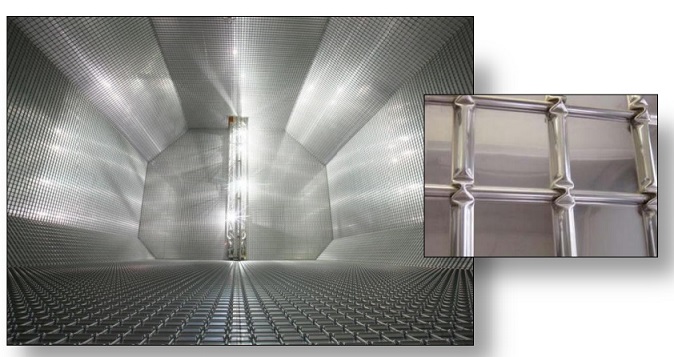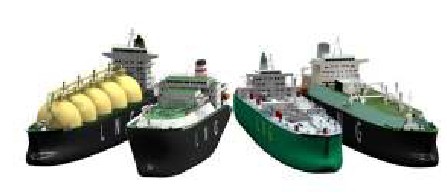
Fig:Various type LNG carrier
Independent Tanks
Independent tanks are completely self-supporting and do not form part of the ships hull structure. Moreover, they do not contribute to the hull strength of a ship. As defined in the IGC Code, and depending mainly on the design pressure, there are three different types of independent tanks for gas carriers: these are known as Type A, B and C.
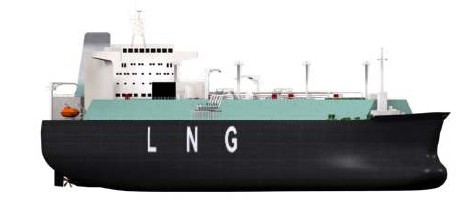
Fig:LNG carrier membrane gaz transport
Type A Tanks
Type A tanks are constructed primarily of flat surfaces. The maximum allowable tank design pressure in the vapour space of for this type of system is 0.7 barg; this means cargoes must be carried in a fully refrigerated condition at or near atmospheric pressure (normally below 0.25 barg).
This type of tank as found on a fully refrigerated LPG carrier. This is a self-supporting prismatic tank which requires conventional internal stiffening. In this example the tanks is surrounded by a skin of foam insulation. Where perlite insulation is used, it would be found filling the whole of the hold space.
The material used for Type A tanks is not crack propagation resistant. Therefore, in order to ensure safety, in the unlikely event of cargo tank leakage, a secondary containment system is required. This secondary containment system is known as a secondary barrier and is a feature of all ships with Type A tanks capable of carrying cargoes below -10 degree C.
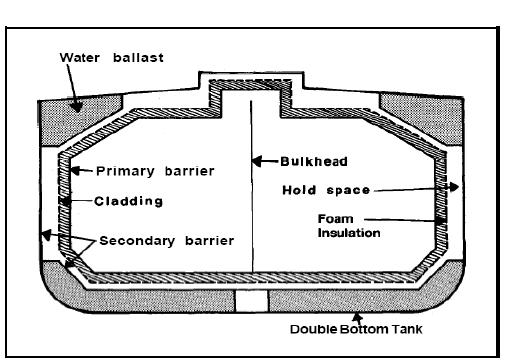
Type A tank - Fully refrigerated LPG tanker structure
For a fully refrigerated LPG carrier (which will not carry cargoes below 55 degree C) the secondary barrier must be a complete barrier capable of containing the whole tank volume at a defined angle of heel and may form part of the ships full, as shown in the figure.
In general, it is this design approach which is adopted. By this means appropriate parts of the ships hull are constructed of special steel capable of withstanding low temperatures. The alternative is to build a separate secondary barrier around each cargo tank.
The IGC Code stipulates that a secondary barrier must be able to contain tank leakage for a period of 15 days.
On such ships, the space between the cargo tank (sometimes referred to as the primary barrier) and the secondary barrier is known as the hold space. When flammable cargoes are being carried, these spaces must be filled with inert gas to prevent a flammable atmosphere being created in the event of primary barrier leakage.
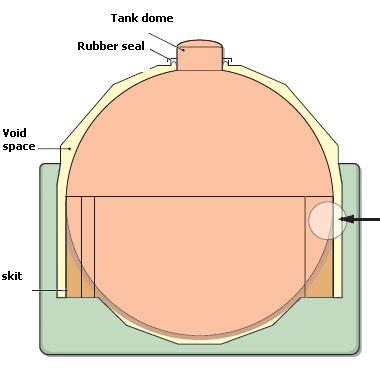
IMO type B tank
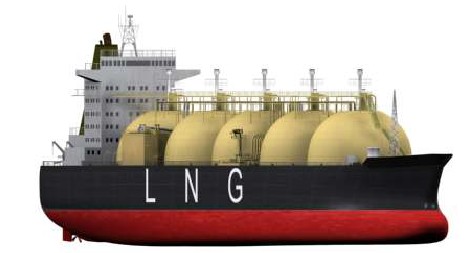
Fig:LNG carrier moss tanks
Most Moss type vessels have 4 or 5 tanks. The insulation in these tanks is provided by thick layer of
foam insulation around the tank. The tanks are checked for any leakages by nitrogen atmosphere
in special thin layer called tinfoil. This layer also allow the insulation to remain dry.
These tanks are susceptible to contraction and expansion during cool down and warm up, so that
can reach even 2 foots(0,6098m) . For these reason all piping come into the tanks through the
top part and are connected to the ships lines via flexible bellows. The skit is also constructed to
endure changes in tank diameters, as well as it has enough to transfer successfully tanks weight to
ships hull. The pressure in this tanks usually don't exceed 55kPa (0.55bar) but in emergency
cases it can reach the 1 bar pressure.
Type C Tanks
Type C tanks are normally spherical or cylindrical pressure vessels having design pressures higher than 2 barg. The cylindrical vessels may be vertically or horizontally mounted. This type of containment system is always used for semi-pressurized and fully pressurized gas carriers.
In the case of the semi-pressurized ships it can also be used for fully refrigerated carriage, provided appropriate low temperature steels are used in tank construction. Type C tanks are designed and built to conventional pressure vessel codes and, as a result, can be subjected to accurate stress analysis. Furthermore, design stresses are kept low. Accordingly, no secondary barrier is required for Type C tanks and the hold space can be filled with either inert gas or dry air.
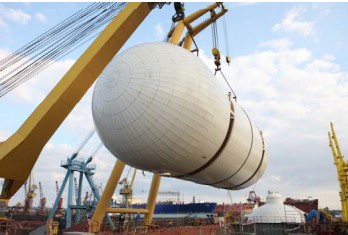
IMO type C tank
